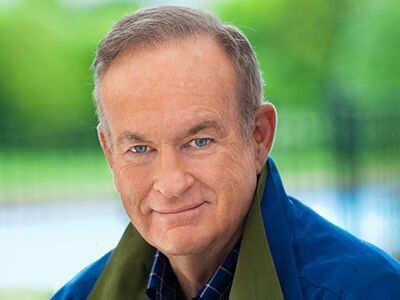Tibetan Buddhist nuns are getting advanced degrees − and the Dalai Lama played a major role in that shift
News > Religion News

Audio By Carbonatix
5:32 AM on Friday, September 26
By Darcie Price-Wallace
Eds: This story was supplied by The Conversation for AP customers. The Associated Press does not guarantee the content.
Darcie Price-Wallace, Northwestern University
(THE CONVERSATION) In August 2025, 161 Tibetan Buddhist nuns from religious institutions across India and Nepal – a record number – gathered at the Dolma Ling Nunnery in northern India to take various levels of the “geshema” examination. These exams are in preparation for one day receiving the geshema degree, comparable with a doctorate in Tibetan Buddhist philosophy. The nearly four-week gathering was especially notable because until 13 years ago it was completely unavailable to women.
Now, thanks to a greater emphasis on women’s education in recent years, Tibetan Buddhist nuns are increasingly becoming teachers and abbesses. In monastic institutions and in Buddhist centers around the world, nuns are taking on leadership roles and being acknowledged for their religious scholarship, including the geshema degree.
As a scholar ofreligious studies and gender, I study the changing roles of women in Buddhism. While nuns were long respected in Tibetan Buddhist culture, they were historically not granted access to the same educational or leadership opportunities as monks. But that has changed, in part due to the crucial role played by the 14th Dalai Lama Tenzin Gyatso.
He encouraged nuns to become advanced degree holders as part of his broader goal to increase gender parity. “Biologically there is no difference between the brains of men and women and the Buddha clearly gave equal rights to men and women,” he said in 2013. In addition to nuns reciting prayers and performing rituals, he emphasized they should study classic Buddhist texts, something traditionally reserved for men.
Such guidance has helped challenge historical misconceptions about women’s intellectual abilities that undermined women’s prominence in Buddhism. Indeed, nuns are now teaching philosophy within their own nunneries at home and abroad, becoming principals of their institutions, serving as role models for other nuns and the laity, and entering long retreats – a staple of Buddhist contemplative activities on the path to awakening.
Historical roots
The Dalai Lama has resided in exile since 1959, when he fled to northern India following unrest over the Chinese occupation of Tibet. Many Tibetans followed him, and he has remained the key religious and political leader of the Tibetan community and diaspora ever since, though he officially gave up political duties in 2011 to the Tibetan government in exile.
During the Dalai Lama’s decades of leadership, improving education for the diaspora communities of Tibetans in India and Nepal has been a crucial avenue for protecting and preserving Tibetan culture, including Tibetan Buddhism.
Historically, however, the path of formal education was primarily reserved for monks. In Tibet, nuns were primarily ritual specialists, according to Buddhist studies scholars such as Karma Lekshe Tsomo, Mitra Härköken and Nicola Schneider. They performed rituals in temples and homes but rarely had the opportunity to study the Buddhist texts.
And even with the Dalai Lama’s support, developing a systematic course of study for nuns that was equivalent to monks’ curriculum was not easy, especially with only a limited number of nunneries in India and Nepal, according to Schneider’s research.
“When the nuns arrived in India, they were ill, exhausted, traumatized and impoverished,” recalled Lobsang Dechen, co-director of the nonprofit Tibetan Nuns Project, in 2023. “Many nuns had faced torture and imprisonment at the hands of the Chinese authorities in Tibet and endured immense physical and emotional pain. The existing nunneries in the struggling Tibetan refugee community in India were already overcrowded and could not accommodate them.”
Nuns’ education prospects were also hampered by limited literacy and monks who held administrative and decision-making roles over them. The women essentially lived in “masculine institutions inhabited by nuns,” scholar Chandra Chiara Ehm argued in her ethnographic work on the Kopan Nunnery in Nepal. Ehm found monk administrators tended to endorse the Dalai Lama’s calls for gender parity in name without directly supporting nuns’ education.
A new age for educational opportunities
Increased access to education for nuns began to change in the 1980s as more Tibetan nuns migrated to India and Nepal. A network of more developed nunneries followed, such as Gaden Choling and Dolma Ling in Dharamshala, India, where the Dalai Lama lives in exile.
These institutions were funded by organizations such as the Tibetan Nuns Project, part of the broader Tibetan Women’s Association that was established in Tibet in 1959 in response to the Chinese occupation. The TWA was reinstated in India with the blessing of the Dalai Lama in 1984, and the Tibetan Nuns Project was established soon thereafter to educate and support nuns in India from all Tibetan schools.
The Dalai Lama encouraged these organizations to help build nunneries, empower existing nuns and support their further education. “In the beginning when I spoke about awarding Geshema degrees, some were doubtful,” the Dalai Lama recalled in 2018. “I clearly told them that Buddha had given equal opportunity for both men and women.”
Alongside the Dalai Lama’s efforts and more Tibetan nuns coming into the diaspora in India and Nepal, several other factors helped promote women’s advancement.
Those include the advocacy and support of international organizations such as Sakyadhita International Association of Buddhist Women, which has hosted international meetings to empower nuns and lay Buddhist women for nearly 40 years.
Within India, meanwhile, local nonprofits such as the Ladakh Nuns Association have provided opportunities for nuns to work in health care.
Reaching the highest ladder of monastic teaching
The geshema degree that nuns have been able to receive since 2012 is in the Geluk tradition, one of the four schools, or distinct branches, of Tibetan Buddhism. These degrees are the highest level of monastic training but were previously available only to men, whose degree are known as “khenpo” or “geshe.”
Candidates for the geshema degree are tested after having studied Buddhist texts. Nuns must score 75% or higher during their 17 years of study before qualifying to take the geshema examinations.
In 2016, the Dalai Lama presided over and granted 20 Tibetan nuns geshema degrees, four years after he and the Tibetan government in exile recognized the accreditation of higher degrees for nuns. Before the formal development of the geshema program, only one German nun, Kelsang Wango, had received a degree. Now, there are 73 geshemas.
After the Geluk school began granting geshema degrees, nuns within the other schools of Tibetan Buddhism – Nyingma, Sakya and Kagyu – also began pursuing advanced degrees in India and Nepal. Within these other three branches, nuns carry the title of “khenmo,” which like the geshema qualifies them to teach the renowned Buddhist scriptures. In 2022, the Dalai Lama offered blessings to the new khenmo, who received their titles in the Sakya school.
All told, nuns are changing the course for Tibetan Buddhist women – and have had an ally in the Dalai Lama.
As the numbers of women at the highest echelons of learning continue to grow, women will likewise expand their ability to take leadership roles in their monastic and lay communities – helping to improve other nuns’ education and protecting Tibetan culture in the process.
The Conversation is an independent and nonprofit source of news, analysis and commentary from academic experts. The Conversation is wholly responsible for the content.







